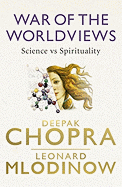YOGA ~ India’s first global brand

Of all the global Indian brands, YOGA is perhaps the most recognized quality product exported for everyone’s wellbeing. YOGA like many things cultural is a product of an ancient & continuous 5000 year old Indian civilisation and yet quite modern with the backing of science.
Did you know ~ search the word ‘yoga’ in amazon.com and you get links to some 50,000 yoga related products under 27 departments. That’s how prolific the yoga industry has grown. The Wal-Mart’s Web site has some 1,000 yoga products. Yoga is a multi-billion dollar industry in the USA, with some 30 million American practitioners, $27 billion/year revenues (from centres, audios, videos, books, conferences, retreats), over 10,000 studios/teachers, and more than 700,000 subscribers to Yoga Journal magazine.
Did you know ~ over 98% of yoga teachers, instructors and students in the USA are non-Indians. Wonder why we Indians are not interested in teaching yoga – especially when the 2 million strong Indian community in the United States is one of the most educated and wealthiest groups? What does that tell us?
It is also estimated that there are about 1 million people in the United Kingdom practicing yoga. In India, Baba Ramdev is particularly well-known for his efforts in popularizing yoga to the masses using mainstream media, claiming to have over 85 million people following his yoga camps via TV channels, and video. This is in addition to some incredible work done by dedicated yoga centres like the Bihar School of yoga, Shivananda Yoga Vedanta centre and others.
Despite this explosion of yoga, especially after the Baba Ramdev revolution, do we really know much about yoga and its history? According to many yoga scholars most of us, especially who come from the land of yoga i.e. India, don’t even have a decent understanding of yoga. We seem to have an elementary understanding of Yoga and associate it with some stretching, postures or some breathing exercises.
So what is yoga and what’s the source or history of yoga? In fact yoga is much more than exercise. The word Yoga comes from the Sanskrit word “Yuj” meaning to yoke, join or unite. This implies integrating all aspects of our personality i.e. body with mind and mind with soul thereby uniting the individual with consciousness.
The first references to the history of yoga can be found in the Rig Veda. Most of the authentic or improvised “yoga” that we see practised today is actually one of the six orthodox philosophical schools as expounded by Sage Patanjali. The foundation text of the Yoga system is the ‘Yoga Sutras’ by Patanjali who is regarded as the founder of the formal Yoga philosophy called ‘Raja yoga’. Raja yoga is concerned principally with the nurturing of the mind through an eight fold path only to culminate in meditation to finally achieve absolute freedom or liberation (kaivalya). Raja Yoga is also referred as Ast?nga (eight-limbed) yoga because there are eight progressive aspects to the path to which one must attend. Raja Yoga is so-called because it is primarily concerned with the mind.
Since the mind is related to the body, the body must be first made pure through self-discipline and that’s what we call it today as ‘yoga’ or originally called ‘Hatha Yoga’. A good level of overall psycho-physical health and integration must be attained through hatha yoga by way of asanas, pranayama etc before the subtler aspects can be pursued.
The classical texts of yoga are the ‘Yoga Sutras’ by Patanjali, the Hathayoga Pradipika by Yogi Svatmar?ma, the Gheranda Samhita and the Shiva Samhita. It’s the Hatha Yoga Pradipika, Gheranda Samhita and Shiva Samhita where we get the details of all the yogic postures, breathing and cleansing (kriya) techniques. Many other Hindu texts discuss aspects of yoga, including Upanishads, the Bhagavad Git? and various Tantras. Yoga was also prevalent in ancient India with several seals discovered at Indus Valley Civilization (3300–700 BCE) sites depicting figures in positions resembling a common yoga or meditation poses.
The genesis of the globalisation of yoga first came in contact with the west during the times of Plato and Aristotle who paid acknowledgments to Indian values and practices in their arts. These contacts were furthered by Alexander’s arrival in India in the 3rd century BCE.
Modern Yoga gained momentum in the west after late 1800′s after the famous disciples of Swami Vivekananda, other great gurus like Osho, Maharishi Mahesh Yogi, Paramahansa Yogananda, Swami Vishnudevananda, Swami Satyananda and others traveled to west and introduced the science and practice of yoga.
Yoga masters began to travel to the west (all over the world, in fact) in the late 1800s and early 1900s. By the 1920s T. Krishnamacharya demonstrated Hatha Yoga throughout India and opened the first school to teach the practice. Three of his students significantly spread authentic yoga, in particular B.K.S. Iyengar, T.K.V. Desikachar and Pattabhi Jois. In 1947 T.Krishnamacharya’s disciple Indra Devi opened a yoga study in Hollywood which was the beginning of the spread and popularization of Hatha Yoga in the United States.
Although most modern practitioners have no sense of the history of yoga or even a clue about the origins of yoga as a spiritual discipline, they are aware of its health and exercise advantages. Thanks to medical experts like Deepak Chopra, David Simon, Andre Weil and Gurus like Swami Niranjanananda Saraswati and others who have restored yoga’s to its right glory making it a quality product and a global brand.
The brand yoga, which is an essential part of Vedic Hindu religion, has been a part of India’s culture and daily religious practice for over 5,000 years. Time is not far when the modern man would adopt yoga in his daily practice in one form or the other thus making it a truly quality brand exported from India.






